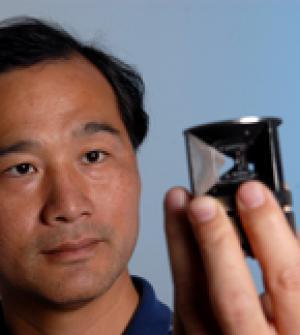Materials deep inside Earth have unexpected atomic properties that might force earth scientists to revise their models of Earth's internal processes, a team of researchers has discovered.

|
| ©University of Texas at Austin
|
| Jung-Fu Lin and colleagues used a diamond anvil cell to recreate materials and conditions in Earth's lowermost mantle.
|
The researchers recreated in the lab the materials, crushing pressures and infernal temperatures they believe exist in the lowermost mantle, nearly 2,900 kilometers (1,800 miles) below Earth's surface. They report in the journal
Nature Geoscience the materials exhibit rare and unexpected atomic properties that might influence how heat is transferred within Earth's mantle, how columns of hot rock called superplumes form, and how the magnetic field and heat generated in Earth's core travel to the planet's surface.
The planetary building blocks magnesium, silicon, oxygen and iron are the most abundant minerals in the lowermost mantle. A team of scientists led by Jung-Fu Lin at The University of Texas at Austin's Jackson School of Geosciences synthesized materials from these building blocks in a diamond anvil cell, a device containing two interlocking diamond pieces that squeeze the sample like a vice. They subjected the sample to more than 1.3 million times standard atmospheric pressure. Shining a laser through the transparent diamonds, they then heated the sample to almost 3,000 degrees Celsius (5,400 degrees Fahrenheit) for several days.


